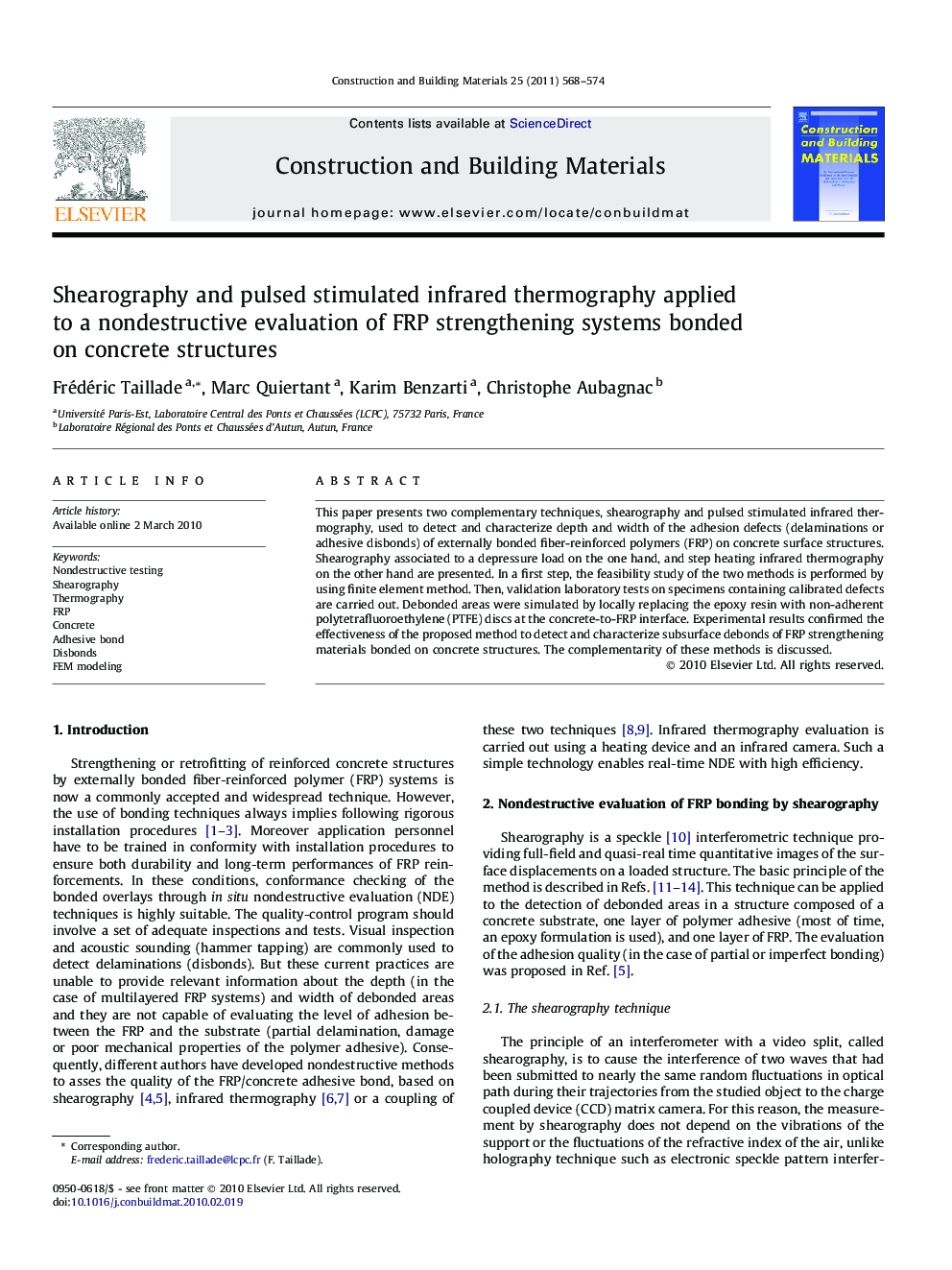| Article ID | Journal | Published Year | Pages | File Type |
|---|---|---|---|---|
| 259937 | Construction and Building Materials | 2011 | 7 Pages |
This paper presents two complementary techniques, shearography and pulsed stimulated infrared thermography, used to detect and characterize depth and width of the adhesion defects (delaminations or adhesive disbonds) of externally bonded fiber-reinforced polymers (FRP) on concrete surface structures. Shearography associated to a depressure load on the one hand, and step heating infrared thermography on the other hand are presented. In a first step, the feasibility study of the two methods is performed by using finite element method. Then, validation laboratory tests on specimens containing calibrated defects are carried out. Debonded areas were simulated by locally replacing the epoxy resin with non-adherent polytetrafluoroethylene (PTFE) discs at the concrete-to-FRP interface. Experimental results confirmed the effectiveness of the proposed method to detect and characterize subsurface debonds of FRP strengthening materials bonded on concrete structures. The complementarity of these methods is discussed.
